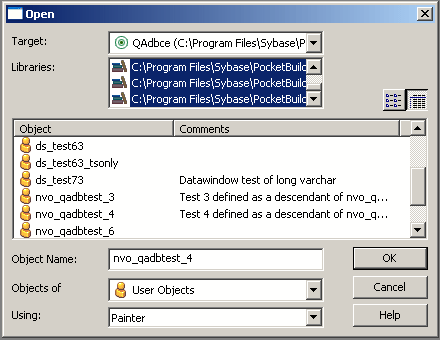You can open existing objects from the Open dialog box or directly from the System Tree.
![]() To open existing objects:
To open existing objects:
Click the Open button in the PowerBar or Select File>Open from the menu bar.
In the Open dialog box, select the object type from the Object Type drop-down list. Then select the target as well as the library or libraries you want to look in. Finally, select the object you want to open.
Figure 3-12: Opening a User Object from the Open dialog box

Click OK.
The object opens in the appropriate painter.
You can quickly open recently opened objects by selecting File>Recent Objects from the menu bar. The Recent Objects list includes the eight most recently opened objects, but you can include up to 36 objects on the list.
![]() To modify the number of recent objects:
To modify the number of recent objects:
Select Tools>System Options from the menu bar.
On the General page of the System Options dialog box, modify the number for the recent objects list.